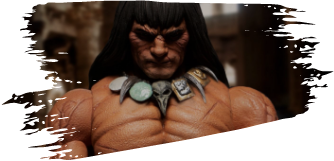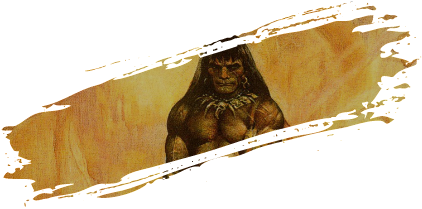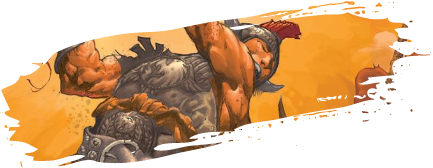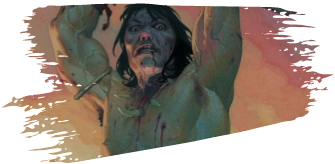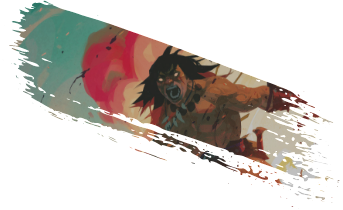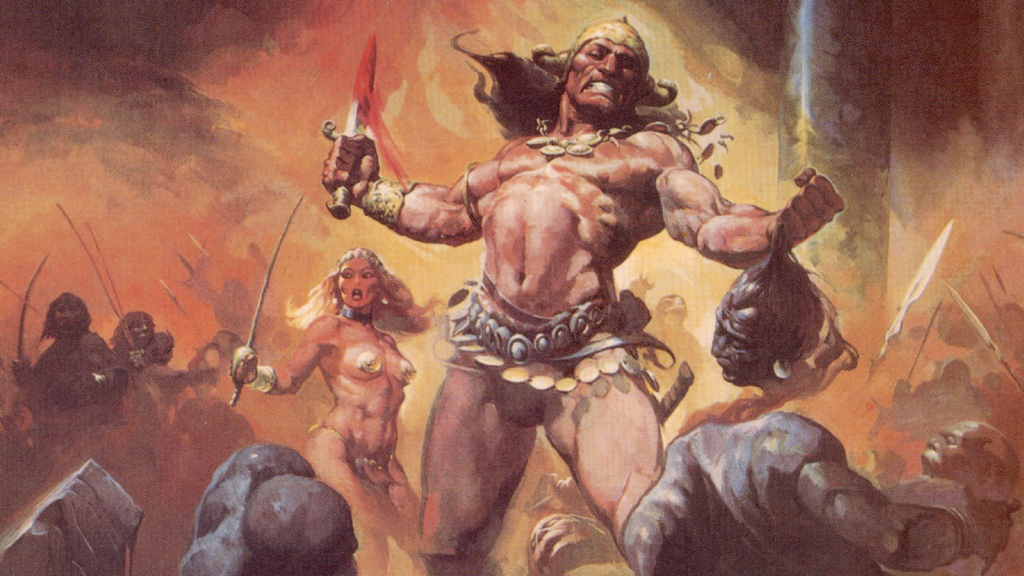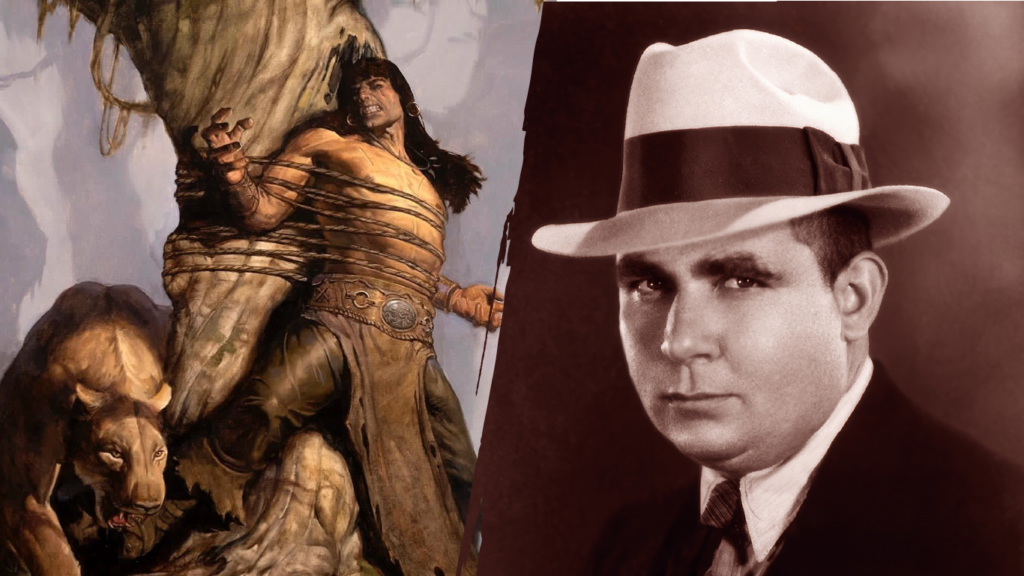
You might think you know Robert E. Howard’s world—where Conan the Barbarian carved his legend through the mythical Hyborian Age.
But long before Hollywood’s “strong female characters”, Howard was quietly penning some of the most compelling warrior women in fantasy literature. Not because he had an agenda to push, but because it made for good, realistic storytelling centered on realistic people with realistic desires and fears.
What you’re about to embark on isn’t a lecture on representation or a revisionist take on classic sword and sorcery. Instead, we’re diving deep into the blood-soaked, thunder-echoing world where Howard’s heroines earned their place through steel and cunning. Their stories weren’t written to make a point—they were written to grip you by the throat and drag you into adventure.
So forget everything you think you know about women in classic fantasy. This is a tale of pirates, warriors, and queens who changed the genre forever… whether the genre was ready for them or not.
The Historical Context of When Robert E. Howard Was Writing
To truly understand the significance of Robert E. Howard’s female characters, we must first step into the complex world that birthed them.
Within the pages of The JUNTO, a round-robin newsletter shared among Howard and his contemporaries, we find our first glimpse into his surprising defense of women’s strength. When one of his friends penned an inflammatory essay about women in fantasy—a deliberate provocation aimed at Howard, whom they teasingly called a “Tristan”—the Texas author responded with passionate conviction. Drawing from historical examples, he constructed a spirited defense that thoroughly silenced his critic, revealing a mind far more nuanced than many might expect from a pulp writer of his era.
This complexity echoes through Howard’s correspondence, particularly in his letters to H.P. Lovecraft. In October 1930, he recounted the tale of Dock Holder and his sister—a story that reads like something from his own fiction, yet sprung from the soil of Texas history: “A bold man was Dock Holder, who held forth in East Texas in the ’80s and ’90s. A gunman named Jackson shot him down, and Holder’s sister lifted him and held him up while he killed Jackson. Of such stuff were Texas women made!”
Yet Howard’s views were not without contradiction. In a May 1932 letter to Lovecraft, we find him oscillating between admiration for “hardy women of history” and more conventional attitudes of his time. Like the misty landscapes of his fictional Cimmeria, Howard’s perspective on women seems to shift between traditional and contemporary, revealing different aspects depending on where one stands.
But as we turn our gaze to the heroines themselves that he created, we begin to see how they emerged not just from Howard’s imagination, but from a complex interweaving of historical appreciation, personal conviction, and the vibrant literary community of which he was a part.
Belit: The Pirate Queen Who Changed Everything

In the evolution of Howard’s storytelling, “Queen of the Black Coast” stands as a watershed moment—a tale that would forever alter the landscape of his Hyborian Age. Before Bêlit’s arrival, women in the Conan stories largely served as plot devices, mere catalysts for the Cimmerian’s adventures. But with the introduction of the Pirate Queen, Howard broke free from these constraints, crafting a character whose influence would echo through decades of fantasy literature.
Bêlit emerges not as a damsel to be rescued or a prize to be won, but as a force of nature in her own right. While the attitudes of the day inevitably colored her portrayal, she nevertheless represented a significant step forward in the author’s treatment of female characters. As a pirate queen commanding her own destiny, she stands as Conan’s equal in ambition, cunning, and ferocity.
Yet what makes Bêlit truly remarkable is how she opened the door for even more complex female characters in Howard’s work. Her appearance marked the beginning of a journey that would eventually lead to characters like Sonya of Rogatino in “Shadow of the Vulture”—a progression that reveals Howard’s growing sophistication in crafting women warriors who could stand as equals alongside their male counterparts.
The character’s enduring impact is perhaps best measured by her persistent resonance with readers and creators alike. In fact, “Queen of the Black Coast” is one of the most frequently reprinted of Howard’s stories, its epic love story and gothic trappings capturing imaginations across the decades. So profound was its influence that echoes of Bêlit’s death and resurrection would later find their way into the iconic scene with Valeria in the Conan film adaptation, demonstrating the story’s lasting power to inspire new interpretations.
Ultimately, in Bêlit, Howard created a template that would challenge and expand the possibilities for female characters in fantasy fiction. Her legacy lives on not just in the countless reprintings of her tale, but in the generations of strong, complex women warriors who would follow in her wake, each carrying a spark of the fierce independence that first blazed to life aboard the decks of the Tigress.
Valeria: A Warrior Without Compromise

If Bêlit represented Howard’s first major step in evolving his female characters, Valeria of “Red Nails” emerged as the culmination of this development. Her appearance in what would become Howard’s final Conan story showcases a master storyteller at the height of his powers, crafting a character who would influence generations of fantasy authors.
What sets Valeria apart, particularly in the broader context of sword-and-sorcery fiction, is Howard’s practical approach to her characterization. While later genre entries would often resort to the infamous “chainmail bikini” aesthetic—most notably seen in the portrayal of Red Sonja—Howard deliberately clothed his warrior women in sensible attire suitable for combat. This practical approach to female warriors reflected a deeper respect for these characters as legitimate fighters rather than mere visual spectacle.
The publication history of “Red Nails” also offers a fascinating glimpse into the tensions between Howard’s vision and the commercial realities of pulp publishing. Margaret Brundage, known for her covers featuring scantily-clad women, chose to illustrate Valeria’s torture scene for the Weird Tales cover. While Brundage was a noted fan of Howard’s work, this editorial decision highlighted a disconnect between Howard’s characterization and the magazine’s marketing approach. The cover sold well, but as our sources note, it succeeded because Valeria was depicted nude, rather than showcasing her prowess as a warrior thwarting cultists—a direction that would have more faithfully represented the character’s role in the story.
The contrast between Howard’s treatment of Valeria and later sword-and-sorcery portrayals of female warriors becomes particularly striking when viewed through a modern lens. While the “T&A” aspects of characters like Red Sonja—especially as illustrated by Frank Thorne and his successors through the 1970s, ’80s, ’90s, and early 2000s—came to dominate the genre’s visual language, Howard’s original vision of practical, capable warrior women stood apart. This disparity between Howard’s actual work and later genre conventions has led to unfortunate misattributions, with criticisms of exploitative portrayals often incorrectly laid at Howard’s feet rather than subsequent adaptations.
Decades after its initial publication, Barry Windsor-Smith’s adaptation of “Red Nails” would bring new attention to Valeria’s character. His interpretation, published initially in Marvel Comics’ Conan the Barbarian, offered a fresh perspective on Howard’s warrior woman, introducing her to a new generation of readers while maintaining the integrity of Howard’s original characterization.
Valeria thus stands not only as a compelling character in her own right but as evidence of Howard’s commitment to creating female warriors who earned their place in his stories through skill and determination rather than exploitation.
The Evolution of Robert E. Howard’s Female Characters

The evolution of Howard’s female characters reveals a writer constantly refining his craft, influenced both by his contemporaries and his own growing artistic vision. This development gains particular significance when viewed alongside his personal growth during this period, coinciding with his relationship with Novalyne Price—a connection that may have contributed to his expanding perspectives.
The development of Sonya of Rogatino in “Shadow of the Vulture” in particular marks a crucial waypoint in Howard’s journey as a writer. Here, we find Howard presenting a female warrior as an equal to Von Kalmbach, demonstrating his growing comfort with strong, capable women warriors. This characterization served as a bridge between his earlier works and the more nuanced portrayals that would follow, particularly in his historical adventure fiction.
Indeed, Howard’s historical adventure stories represented a path not fully traveled. His treatment of women in these tales suggests that he was poised to break free from the constraints of pulp fiction entirely. “Sword Woman”, the origin story of Dark Agnes, was remarkably progressive in its depiction of women as warriors. In fact, it was so riveting that, in his correspondence with author Catherine Lucille (C.L.) Moore, she had this to say: “My blessing! I can’t tell you how much I enjoyed “Sword-Woman.” It seemed such a pity to leave her just at the threshold of higher adventures. Your favorite trick of slamming the door on a burst of bugles! And leaving one to wonder what happened next and wanting so badly to know. Aren’t there any more stories about Agnes?”
This unrealized potential becomes even more poignant when considering the timing. The paperback market that began developing at the end of the 1930s would have been perfectly suited for Howard’s historical fiction featuring complex female characters. His “oriental stories” and the historical adventures that never came to be during his lifetime might have found a more receptive audience in this new format, potentially allowing him to fully explore the themes he had begun developing in works like “Sword Woman” and “Blades for France”.
However, it’s not as if Howard’s ability to impact the sword and sorcery genre through strong female characters died with him. Quite the opposite.
The Legacy and Influence of How Robert E. Howard Wrote Female Characters

The evolution of female representation in fantasy following Howard’s work tells a fascinating story of both progress and occasional misunderstanding. The popular “Chicks in Chainmail” anthology series, edited by Esther Friesner, represents an interesting response to the genre’s treatment of female characters. These collections, particularly the first two volumes, featured feminist authors cleverly subverting the very tropes that later adaptations had erroneously attributed to Howard. The series’ success and critical reception suggest an ongoing dialogue about female representation in fantasy that traces its roots back to Howard’s original characterizations.
Perhaps most intriguing is how Howard’s work has found new appreciation through contemporary reappraisal. Nancy Collins and Jessica Amanda Salmonson stand as prominent voices in articulating, preserving, and building upon Howard’s authentic portrayal of strong women. Their engagement with Howard’s legacy demonstrates how his original vision continues to resonate with authors seeking to create meaningful representations of female characters in fantasy. Salmonson, in particular, has contributed significantly to our understanding of Howard’s female characters, penning an influential essay about Agnes—a piece of scholarship that has helped illuminate the deeper currents in Howard’s work.
The true testament to Howard’s influence lies not just in how his female characters have been adapted or reinterpreted, but in how their original incarnations continue to inspire new generations of writers. While Red Sonja may have dominated popular imagination for a time, contemporary authors and scholars increasingly return to Howard’s original texts, finding there a complexity and progressiveness that belies their pulp origins.
Indeed, this return to authenticity has influenced modern interpretations of these characters—perhaps most notably in Gail Simone’s acclaimed reinvention of Red Sonja, where she deliberately moved away from exploitation tropes to focus on creating a more nuanced warrior character, much closer to Howard’s original vision of practical, capable women warriors. This ongoing reappraisal suggests that Howard’s real legacy may not be in how his work was initially received or adapted, but in how it continues to resonate with modern audiences seeking authentic representations of strong, complex female characters.
As we’ve journeyed through the realms of Howard’s fiction, one truth emerges with startling clarity: his female characters deserve to be understood on their own terms, free from the accumulated misconceptions of decades of adaptation and reinterpretation.
For modern readers seeking to discover these characters as Howard originally conceived them, the path leads not through later adaptations or reimaginings, but through the original texts themselves. Here, in stories like “Queen of the Black Coast” and “Red Nails,” we find the authentic heroines of Howard’s imagination, waiting to be rediscovered by each new generation of readers.
Let them inspire us as they inspired Gertrude Hemken so many years ago, when she wrote with such enthusiasm about finding in Howard’s pages “the finest, most loveable brutes” and “strange, possibly unexplored places.” For in exploring Howard’s original works, we too might find ourselves, like Hemken, “just so-o-o happy, we could gurgle!”

Lo Terry
In his effort to help Heroic Signatures tell legendary stories, Lo Terry does a lot. Sometimes, that means spearheading an innovative, AI-driven tavern adventure. In others it means writing words in the voice of a mischievous merchant for people to chuckle at. It's a fun time.

